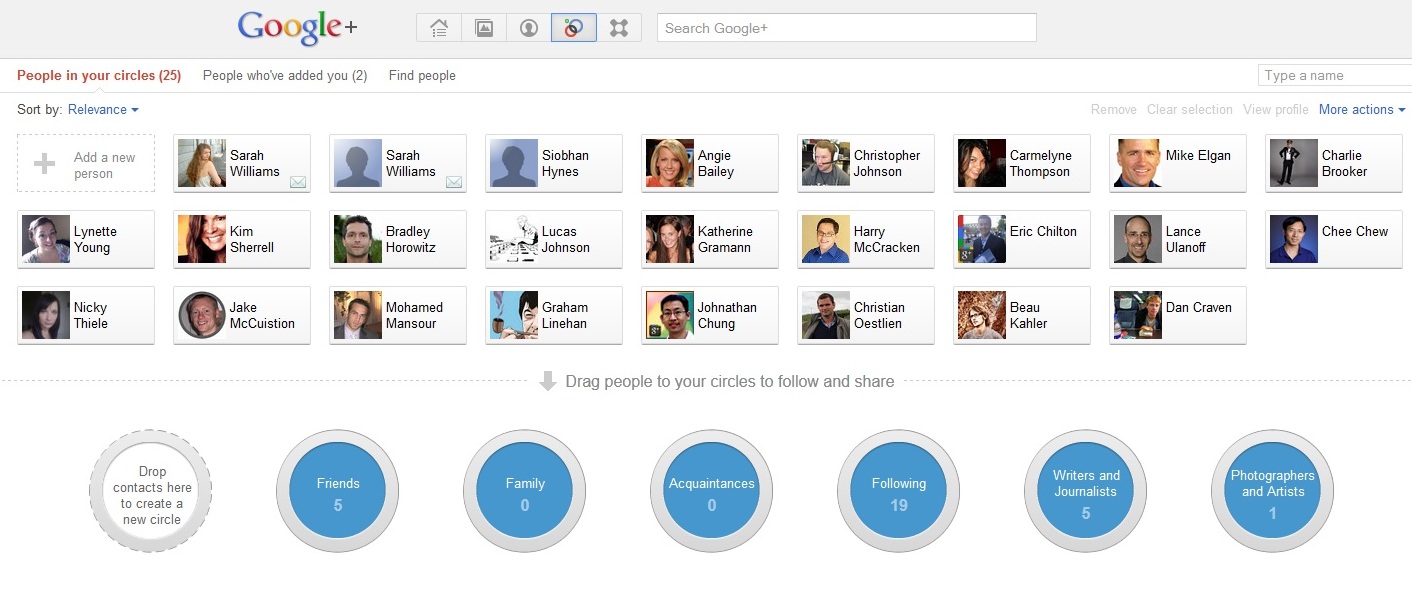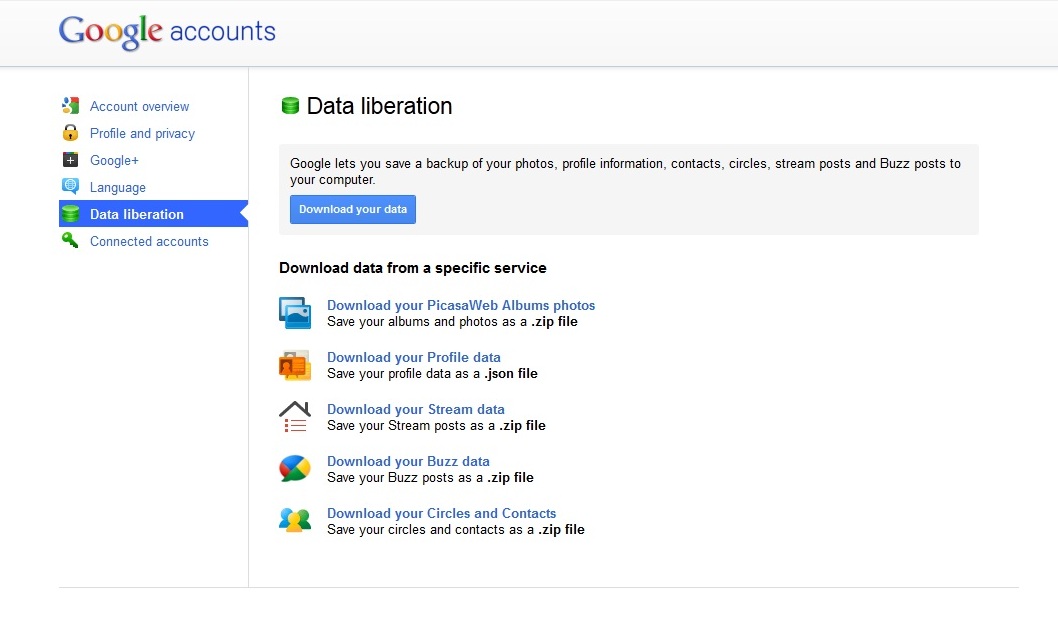Six reasons Google+ still rocks
There have been a lot of naysayers, but Tim Elameer, researcher and writer for Bristol-based agency Kingpin-SEO, reveals the tactics that might give Google+ the edge over the competition
It's been a tough month for Google+. After Steve Yegge's witty indictment ("Oops") and the publication of some uninspiring traffic statistics by Google's advertising competitor Chitika, many people will be questioning the new network's social and commercial potential.
This is perhaps a bit unfair considering the service has been open to the public for less than two months and faces stiff competition from the social media behemoth that is Facebook. While at first glance the future does not look bright for Google+, closer inspection reveals that it offers a number of noteworthy features that may give it more staying power than many commentators assume. Here are a few pointers that will help you make the most of them.
1. Get together in Hangouts
Top of the useful features pile is Google Hangouts. Hangouts enables Google+ users to enter a real-time video conference and is currently available in several incarnations: vanilla Hangouts, Hangouts with Extras and Hangouts on Air. On a personal level, these tools can furnish you with several fun and chaotic ways to spend an evening catching up with far-flung friends; on a professional level, the possibilities for collaborative work and networking are both many and various.
The basic Google Hangouts service allows real-time video chat between up to ten people. While this is largely a no-frills offering, thoughtful inclusions, such as the ability to selectively mute participants and automatic video switching to the person speaking, make it feel like a premium service. YouTube videos can be streamed to everyone in the conversation, so to take just one example, a freelance videographer could pitch to several potential clients using a short promotional video.
Hangouts with Extras strangely removes YouTube streaming but adds several other features to the basic version, such as real-time collaborative 3D modelling through SketchUp, partial or total screen sharing and integration of Google Docs. This means that a team spread across the world can make simultaneous revisions or additions to the same document (or model) while discussing it 'face-to-face'. Brainstorming with distant colleagues is easy and you can literally get a whole team on the same page using the set of tools Google has built into its Hangouts with Extras service.
Google has also released an updated version of the Hangouts API. It will be interesting to see what third party developers make of this in the coming months.
2. Broadcast your skills
Hangouts on Air is an even more exciting prospect. Essentially the service is the same as Google Hangouts but with one all-important twist - although the total number of active participants in a conversation remains limited, an unlimited number of Internet users can watch the action live as it unfolds.
Get the Creative Bloq Newsletter
Daily design news, reviews, how-tos and more, as picked by the editors.
Webinars, live debates, workshops, performances, film screenings and even press conferences – all of these and more may be possible using Hangouts on Air, but unfortunately for the average user of Google+, the ability to broadcast Hangouts on Air is currently "only available to individuals selected by Google." It seems that Google plans to extend the service's availability in the future, although precisely when this will be remains to be seen. Whenever it happens you can be sure that Hangouts on Air will find a number of innovative and exciting applications.

3. Protect your posts
Many people think privacy and social networking are mutually exclusive. With so many people sharing data indiscriminately, this is hardly surprising. Nevertheless, Google+ makes privacy control a central feature and does so by linking content to its Circles system. Using Circles it's quick and easy to segregate friends, family, colleagues and public figures into separate groups. Doing so enables you to manage exactly who is able to see what, and this makes protecting your privacy both simple and effective.
It is worth adding that the Circles interface is a pleasure to use. You can drag and drop icons of your contacts into one or several Circles, allowing even huge groups of new contacts to be arranged in a matter of seconds. It's also possible to prevent other users from seeing the people you have added to your Circles, bringing an extra level of privacy to your profile.

4. Migrate your data
As part of Google's data liberation initiative, Google+ offers a fairly comprehensive 'Takeout' service that allows users to download their PicasaWeb photo albums, Profile data, Stream data, Buzz data and Circles data, either in one fell swoop or in any configuration they desire. This makes transferring information from Google+ to other social networking sites quick and painless, which will come as welcome news to any person or business that wants to manage a web presence across several networks.
Cloning content is best avoided because it can reduce the authenticity of an online presence; however, the Takeout feature makes reworking and reposting your content far easier than it might otherwise be. It also allows you to keep a backup of any information you collect within Google+.

5. Newshounds away
Google has made searching its social network simple and satisfying through additions to the service such as support for hash tags and real-time searching. Real-time searching means that users following a breaking news story (or anything else) can choose to be notified of new posts on the subject as they appear. This is a nice touch, saving users from having to continuously refresh their search pages in order to see new results. Hash tags in posts on Google+ are automatically turned into links that lead to the Google+ search results for those terms, streamlining the process of finding further information on interesting topics.
Google+ operates across several devices including desktop computers, laptops, tablets and smartphones. As well as allowing photographs taken on Android-based devices to be uploaded instantly to a Google+ profile, this enables mobile users with cameras to join in the Hangouts fun. By adding these functions Google+ has positioned itself to draw users with a penchant for creating and sharing news 'on the go' away from Twitter.
6. Claim your brand
Google+ has finally launched brand and hobby profiles under the name Google+ Pages. Vic Gundotra, Senior Vice President of Engineering at Google, commented at the time of launch: "we've still got lots of improvements planned", so don't be discouraged to find differences between brand pages and personal profiles few and far between. Wait for the dust to settle and new features to emerge before passing judgment.
Above all, it is important to claim a page for your brand as quickly as possible in order to prevent online opportunists from establishing themselves in your rightful place. As with other social networks, acting quickly is crucial to protecting your brand.
One unique feature of Google+ Pages is Direct Connect, an improved form of brand-specific Google/Google+ search integration. Once a brand profile is linked to the external website for that brand, internet users who enter the prefix "+" before the brand name in Google's regular search box will find the brand logo accompanying a short tagline and a direct link to the Google+ Pages profile for that brand. As with many Google+ features, the rollout process is gradual and the Direct Connect feature is not yet widely available.
It's worth noting that contests are not only absent from Google+ Pages, they are banned under its terms of service. It seems that Google is either planning to implement a contest function at a later stage or is trying to make Google+ a more reliable indicator of consumer satisfaction than other social networks, where brands tend to 'buy' positive feedback with incentives.
Google's virtual universe
Perhaps predictably, Google+ seeks to bring together a number of popular features from across the social media spectrum; more importantly, this recent pretender to the social networking throne actually does so rather well. Twitter users will be comfortable using hash tags, Facebook users will be familiar with third-party applications, and LinkedIn users will find the service sporting plenty of professional potential. Google+ aims to integrate these features with the products it controls, drawing on YouTube, SketchUp, Google Docs, Gmail and a number of other Google-driven services to create a complete virtual universe. As more services are added to the mix and they are integrated at an increasingly fundamental level, Google+ may eventually become the primary access point for the majority of Google products.
.net magazine is now also on Google+. Come and join us!

Thank you for reading 5 articles this month* Join now for unlimited access
Enjoy your first month for just £1 / $1 / €1
*Read 5 free articles per month without a subscription

Join now for unlimited access
Try first month for just £1 / $1 / €1
The Creative Bloq team is made up of a group of design fans, and has changed and evolved since Creative Bloq began back in 2012. The current website team consists of eight full-time members of staff: Editor Georgia Coggan, Deputy Editor Rosie Hilder, Ecommerce Editor Beren Neale, Senior News Editor Daniel Piper, Editor, Digital Art and 3D Ian Dean, Tech Reviews Editor Erlingur Einarsson, Ecommerce Writer Beth Nicholls and Staff Writer Natalie Fear, as well as a roster of freelancers from around the world. The ImagineFX magazine team also pitch in, ensuring that content from leading digital art publication ImagineFX is represented on Creative Bloq.
